Table of Contents
C-channels do more than hold up a structure — they decide how much steel you’ll move, how much you’ll spend, and how reliably your project holds together.
Before a single piece is cut, the weight per metre must be known. That figure affects everything: your freight bill, your supplier quote, your load calculations, your margins. Misjudge it, and you risk structural failure or overspending. Get it right, and you streamline costs, sourcing, and planning.
This isn’t theory. It’s standard practice in fabrication yards, contractor offices, and vendor negotiations.
In the sections ahead, you’ll find:
- Straightforward methods to calculate C channel weight,
- A verified weight chart in kg/m and kg/ft,
- And practical sourcing tips drawn from how the industry actually works.
No guesswork. Just the numbers that matter.
Try our C Channel Weight Calculator below:
Understanding C Channel Dimensions
Steel C-channels are simple in shape but precise in purpose. Each section comes with three key dimensions — and if you’re ordering by weight or cutting to spec, you need to know exactly what they mean.
Take this size: 100×50×5
- 100 mm is the depth (the vertical part of the “C”)
- 50 mm is the flange width (horizontal edges)
- 5 mm is the web thickness (the flat center)
That’s it. No frills. But every millimetre here affects your load, your layout, and your final cost.
In India, these are commonly sold as ISMC sections — short for Indian Standard Medium Channel. ISMC 75, ISMC 100, ISMC 125 — the number refers to the depth in millimetres.
But don’t rely on just one number. Flange and thickness can vary slightly depending on the steel grade or supplier.
If you’re buying in bulk or cutting for fabrication:
- Check the full size (not just ISMC label)
- Confirm tolerance
- Match it to your load table
Because when a channel is even a few kilos heavier than expected, that’s money — or worse, a design misfit — on your hands.
How to Calculate C Channel Weight
When you’re working with steel, weight isn’t a guess — it’s a number you check before the truck leaves the yard. If you’re ordering mild steel C-channels, calculating weight is straight math. No software needed.
Method 1: Basic Cross-Section Estimate
Use this when you know the section size. Just make sure you convert the numbers first.
Formula:
Weight per metre = Width × Height × Thickness × Density
- Use metres, not millimetres
- Density of mild steel = 7850 kg/m³
Example:
Channel size: 100 × 50 × 5 mm
Convert:
- Width = 0.05 m
- Height = 0.1 m
- Thickness = 0.005 m
Now multiply:
0.05 × 0.1 × 0.005 × 7850 = 0.196 kg/m
That’s your theoretical weight per metre. It doesn’t account for rolling variation or surface finish, but it gives you a ballpark.
Method 2: Web + Flange Volume
This method breaks the section down into parts — the flat web in the middle and the two flanges on the sides.
Here’s how to do it:
- Web volume = Height × Web thickness × Length
- Flange volume = Flange width × Flange thickness × Length × 2
- Add both volumes, then multiply by density
Example:
- Height = 100 mm (0.1 m)
- Flange = 50 mm wide, 10 mm thick (0.05 × 0.01 m)
- Web = 5 mm thick (0.005 m)
- Length = 1 m
Web: 0.1 × 0.005 × 1 = 0.0005 m³
Flanges: 2 × (0.05 × 0.01 × 1) = 0.001 m³
Total volume: 0.0015 m³
Weight = 0.0015 × 7850 = 11.78 kg
That’s the full volume weight — closer to real-world numbers than the simplified method.
Method 3: Rough Field Estimate
Need a quick answer on-site? This one’s used when you don’t have full specs but need to estimate quickly:
Weight = {2(Height + Width) – 2(Thickness)} × Thickness × Length × Density
It won’t win awards for precision, but it’s good enough to call out a bad quote or check loading.
Tip: Always confirm which method your supplier uses. Some quote based on theoretical weight, others use nominal values with rolling margins built in.
And if you’re ordering in tonnes, small errors stack up fast.
C Channel Weight Chart (in kg/m and kg/ft)
When you’re dealing with steel, weight isn’t an estimate — it’s part of the cost. It affects transport, fabrication, and structural loading. The chart below gives you a straight look at how much standard MS C-channels weigh based on size.
These are theoretical weights, calculated using standard density for mild steel (7850 kg/m³). In practice, you’ll see slight variations — but for planning and procurement, this gets you close enough to work with.
Standard MS C-Channel Weights
| Size (mm) | Weight (kg/m) | Weight (kg/ft) |
| 50 × 25 × 5 | 3.86 | 1.18 |
| 75 × 40 × 5 | 6.92 | 2.11 |
| 100 × 50 × 5 | 9.37 | 2.86 |
| 120 × 60 × 6 | 12.61 | 3.85 |
| 150 × 75 × 6.5 | 17.90 | 5.46 |
| 180 × 75 × 7 | 20.59 | 6.28 |
| 200 × 75 × 8 | 22.37 | 6.82 |
| 200 × 75 × 9 | 25.89 | 7.59 |
| 250 × 90 × 9 | 30.59 | 9.33 |
| 300 × 90 × 9 | 34.49 | 10.52 |
Reading the Table
Each size is listed in this order: Height × Flange Width × Thickness, all in millimetres.
- A 100 × 50 × 5 mm channel, for example, has:
- 100 mm height (vertical leg),
- 50 mm flange width (horizontal part), and
- 5 mm web thickness.
The weights shown are for a plain, uncoated, 1 metre or 1 foot section, with no allowances added for galvanising, painting, or fabrication cuts.
If you’re working with ISMC channels, most of these sizes match standard designations — but tolerances vary between mills. Always check the actual weight before closing a large order.
Factors That Affect C Channel Weight in 2025
Steel weight isn’t fixed. Even if the dimensions are standard, the final weight on the scale can shift — sometimes by a few kilos, sometimes more. If you’re planning a bulk order or trying to match design specs, here’s what you need to watch:
Steel Grade
Most people default to mild steel, but it’s not the only option in the market. If you switch to stainless or high-strength steel, the density changes — and so does the weight.
- Mild Steel: ~7850 kg/m³
- Stainless Steel: Slightly heavier
- Galvanised: Add a few percent for the coating
It doesn’t seem like much until you’re moving 10 tonnes.
Rolling Variation
No two batches are exactly alike. Even with IS-marked steel, you’ll see differences between mills — 1 or 2 mm off here or there. Maybe a flange runs wide. Maybe the web’s thicker than spec. That changes your load.
A section that’s meant to weigh 22 kg/m could come in at 23.4. That’s not an error — it’s tolerance.
Surface Finish
Coated channels weigh more. If you’re getting galvanised or epoxy-coated sections, the added layers count. Not much on one piece, but across a truckload? It matters — especially if you’re paying by the kilo.
Length Matters
Standard lengths are usually 6 or 12 metres, but not every piece gets cut clean. Sometimes they overshoot by a few centimetres. Sometimes you’re buying off-cuts or custom lengths. Short or long — the total tonnage changes.
Fabrication Loss
If you’re ordering sections that are already drilled or notched, those cuts take steel out — but unless you’ve negotiated differently, you’re still paying for the full section weight.
Supplier Rounding
Some quote theoretical weight (from a table), others use actual batch weight. A few round up. Depends on how they bill. Always ask.
Key takeaway:
Don’t rely on charts alone. Ask your supplier how they calculate weight — and whether you’re being billed on actuals, averages, or book values. It’s one question that can save you a lot of money.
Buying C Channels the Smart Way
Knowing the weight is one thing. Buying smart is another. Whether you’re picking up a few hundred kilos or negotiating for truckloads, here’s how to avoid common mistakes — and get better value on every order.
Ask for the Actual Weight
Don’t assume. Ask your supplier:
“Is this weight theoretical, nominal, or actual batch weight?”
It’s a simple question. The answer tells you how close the quote is to reality. If you’re paying by the tonne, this matters more than the price per metre.
Confirm Dimensions — Not Just ISMC Number
Saying “ISMC 100” isn’t enough. There are tolerances involved. Some suppliers round sizes up or down. Always get the full size: height, flange width, thickness — in millimetres. Get it stamped on paper if possible.
Watch the Finish
Is it black steel? Galvanised? Epoxy-coated? The coating adds weight and cost. Make sure your weight estimate accounts for it — or you’ll end up off-budget.
Buy by Length or by Weight — Not Both
Some suppliers quote by metre. Others by kilo. Make them pick one — and match it to your project needs. If you’re fabricating, metre-based pricing helps. If you’re buying in bulk, weight might be better.
Mixing both without clarity causes billing disputes, especially when off-cuts and tolerances enter the picture.
Check for Certification
Look for IS 808 compliance or test certificates. If the steel’s not certified, the price may be lower — but so is your protection if something fails later.
If you’re sourcing for structural use, always ask for a mill test certificate (MTC). No MTC? Walk away.
Compare Delivered Cost, Not Just Base Rate
Don’t get fooled by the rate per kg. Add transport, offloading, credit terms, and GST. The cheapest quote on paper isn’t always the cheapest order once it lands on site.
Use a Weight Calculator Before You Commit
Even if the supplier’s quote looks right, do your own math. A 5-minute calculation can save you from ordering too much — or not enough.
Conclusion
Whether you’re building a warehouse frame or sourcing steel for a fabrication line, knowing the weight of a C channel isn’t just helpful — it’s necessary. It determines how much you spend, how much you move, and whether the section you ordered will actually hold under load.
The formulas are simple. The variables aren’t. Steel type, rolling tolerances, coating, billing practices — they all affect the final number. That’s why relying on charts or supplier quotes alone isn’t enough. You need to run your own checks, know the math, and ask the right questions.
If you’re buying in bulk, even a 5% error in weight can swing your costs by thousands. If you’re designing to spec, a miscalculation could compromise the structure.
Use this guide to make sure that doesn’t happen.
Double-check the weight. Validate the dimensions. And don’t let assumptions cost you on-site or on paper.
And if you’re sourcing steel in India — whether for a one-time job or long-term supply — work with platforms that offer real visibility: on weight, pricing, delivery, and terms.
Looking to procure steel?
Tata nexarc helps manufacturers, builders and MSMEs source certified steel products, compare prices, and choose the right grade as per IS codes—with complete traceability and procurement confidence.
FAQs
Can I use a flat bar weight chart to estimate C channel weight?
Is there a standard tolerance range for C channel weight?
What’s the difference between nominal and actual weight in steel billing?
How do I verify C channel weight at the site without a scale?
Do galvanised C channels weigh more than uncoated ones?
Can weight variation affect GST or invoice values?
Are custom-length channels charged differently per kg or per metre?
How do I convert kg/m to kg/ft for C channel weight?
What’s the best way to store MS C channels to prevent weight loss due to corrosion?
Is it safe to rely on online C channel weight calculators?
Ananya Mittal blends a background in data science with a passion for writing, contributing to Tata Nexarc’s efforts in creating insightful, data-informed content for MSMEs. Her work focuses on exploring sector-specific challenges and opportunities across procurement, logistics, and business strategy. She is also involved in leveraging analytics to strengthen content performance and deliver actionable insights to India's growing B2B ecosystem.
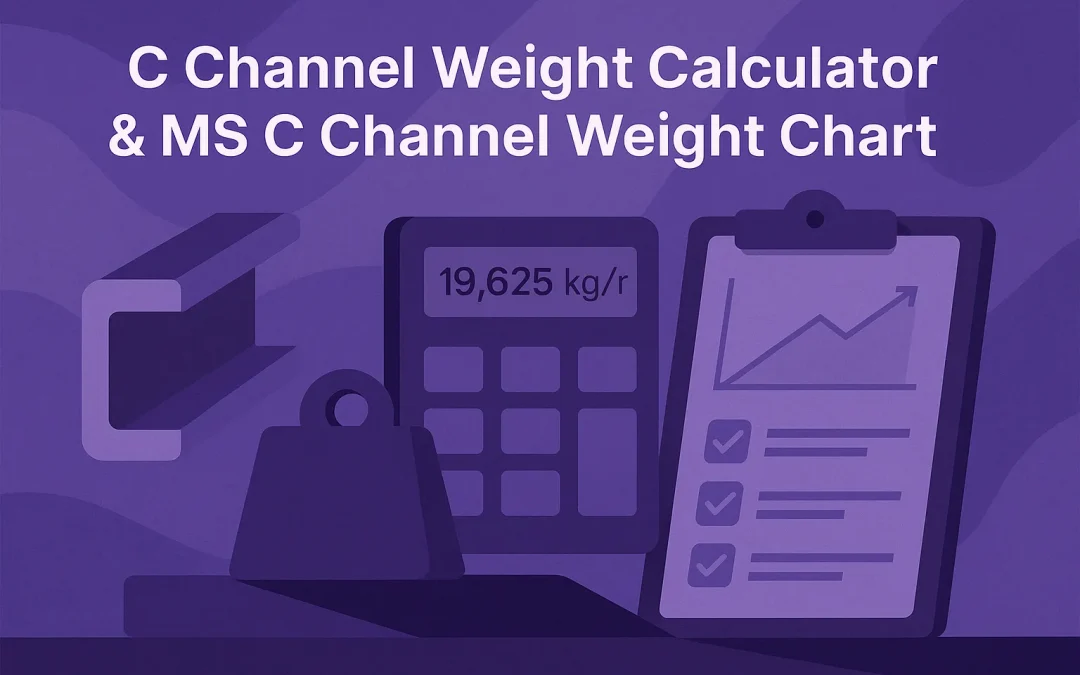

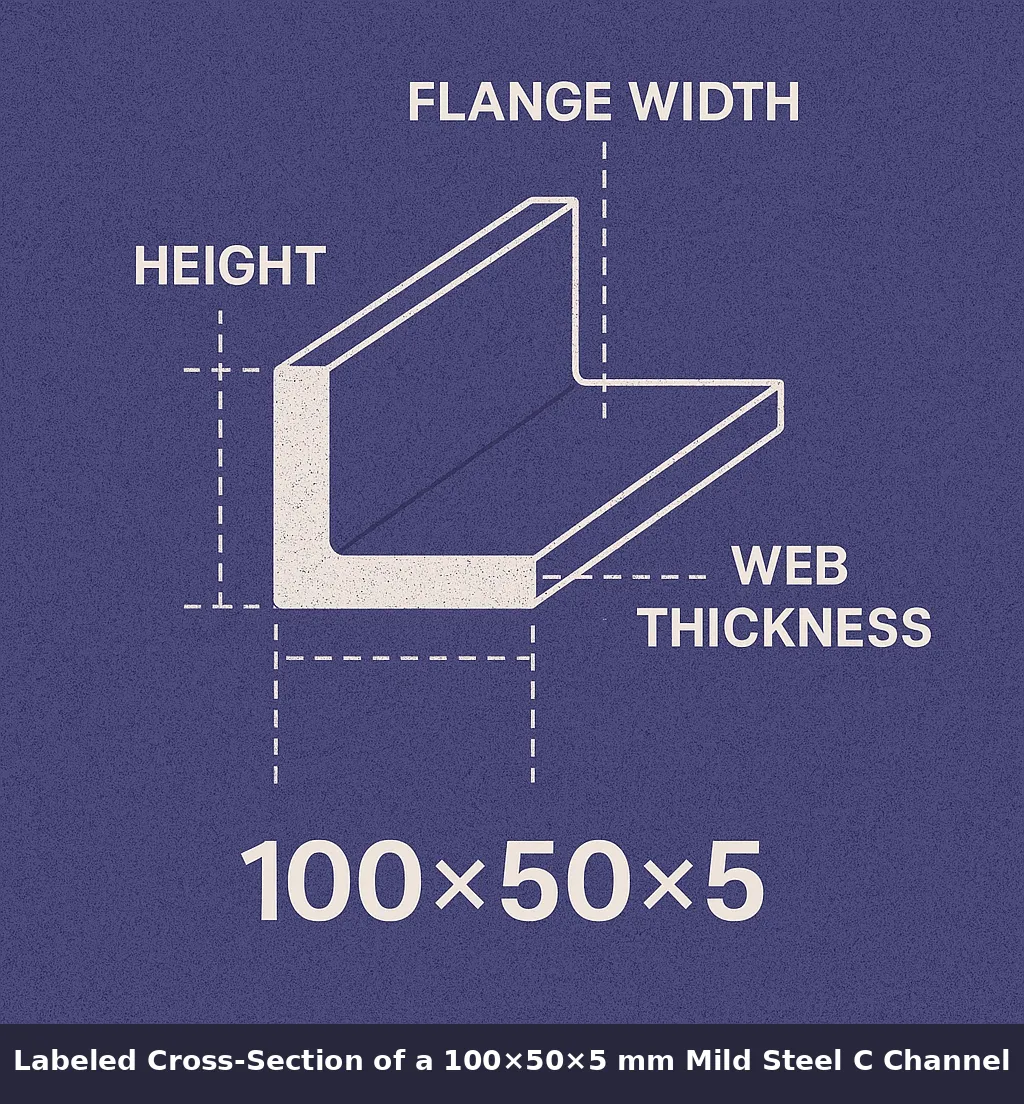
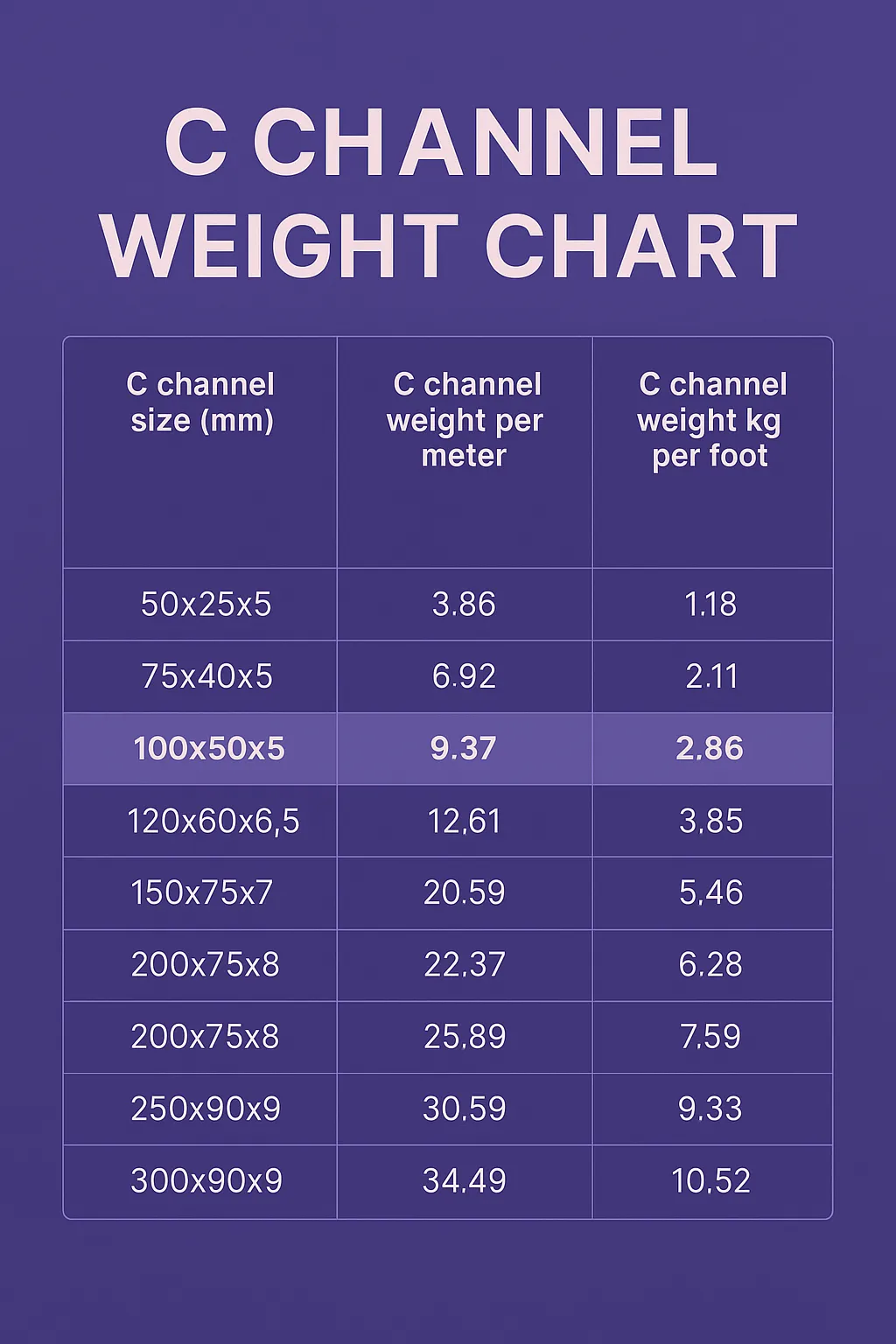
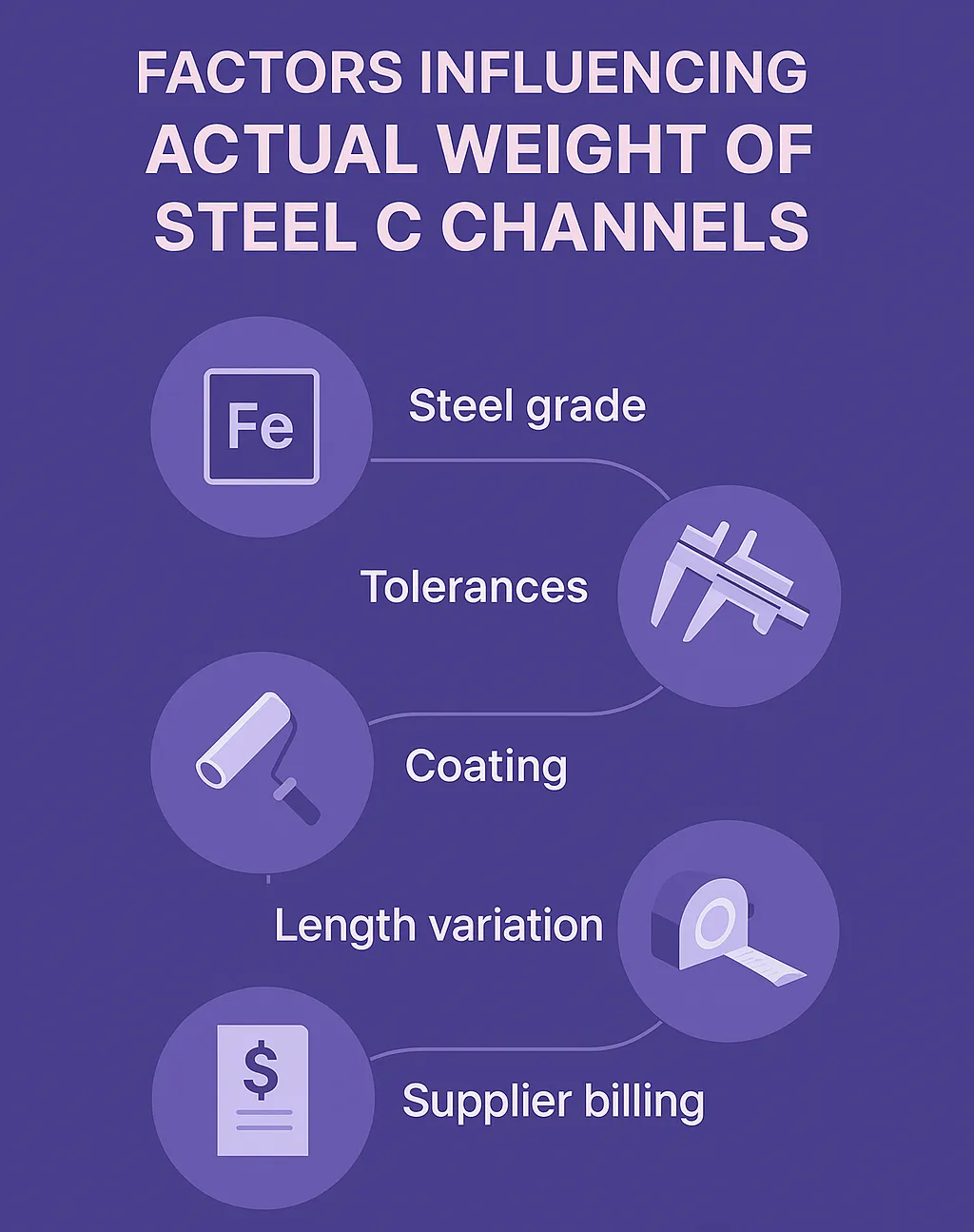
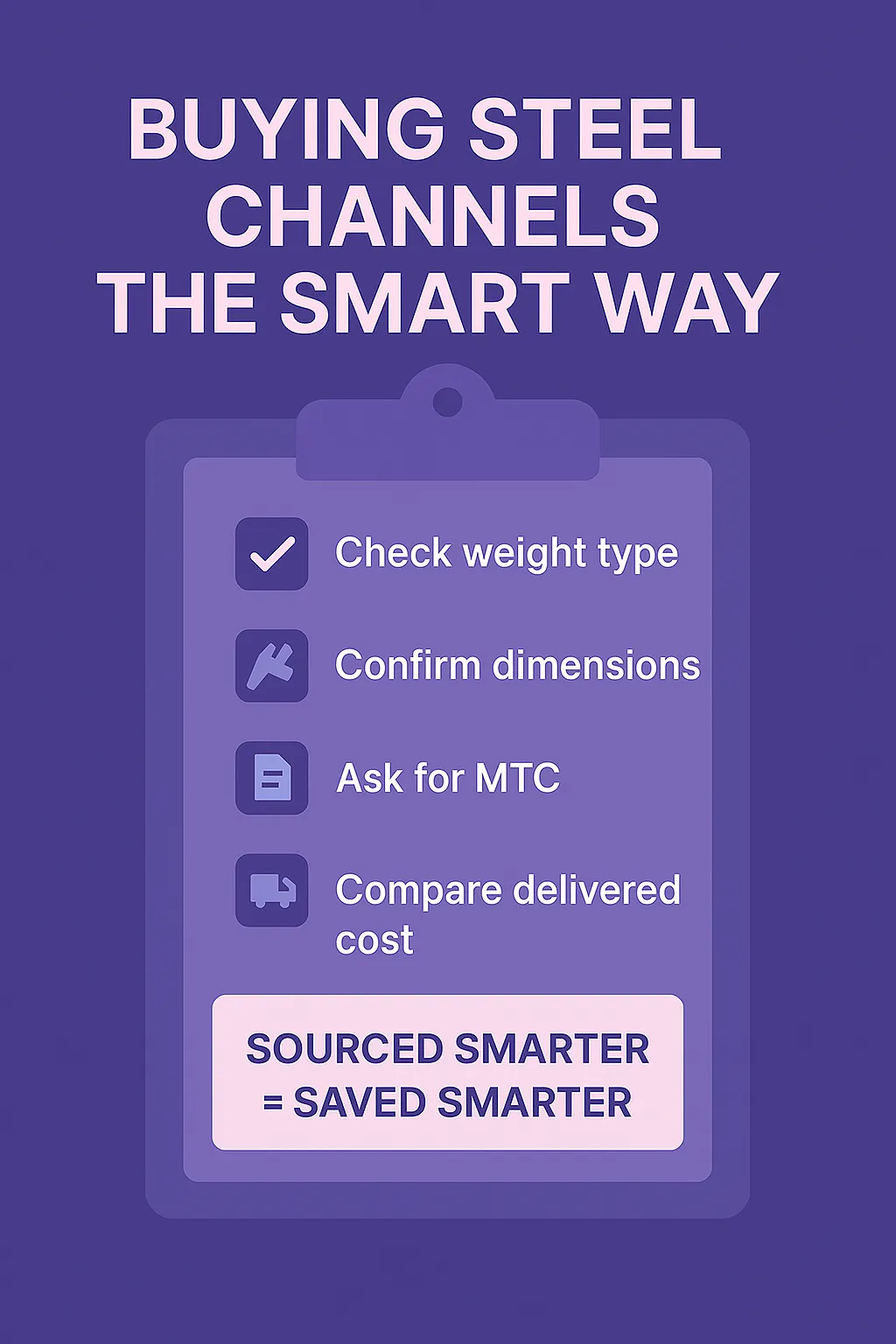






Quality is what matters a lot in this business. Building trust is not easy. We learned that lesson the hard way a few years back – cheap steel is never worth, it is a headache which will make things worst around you.
My workshop has a lot of custom orders involving C channels. The weight chart is best for estimating material costs and ensuring we have enough stock. This way we can explain to clients the proper channel sizes..also these estimations help alot thanks!